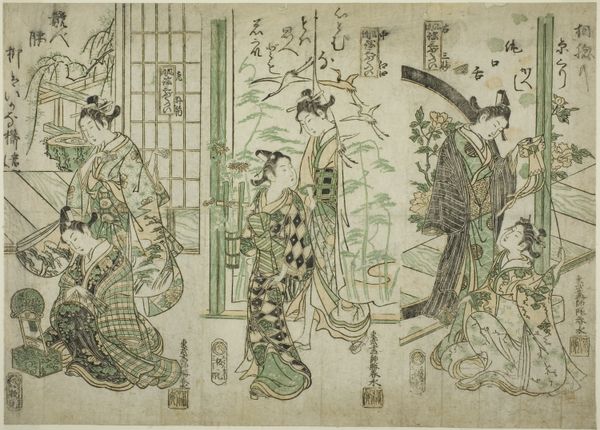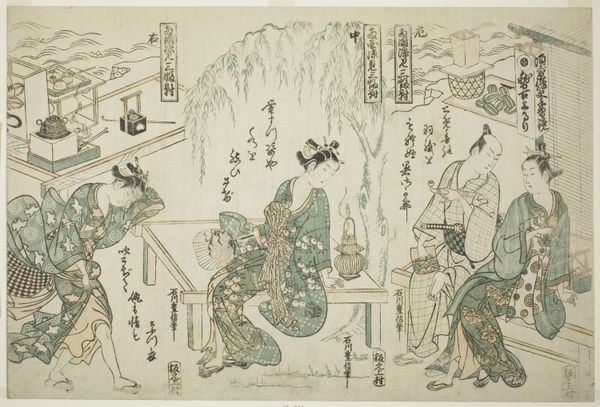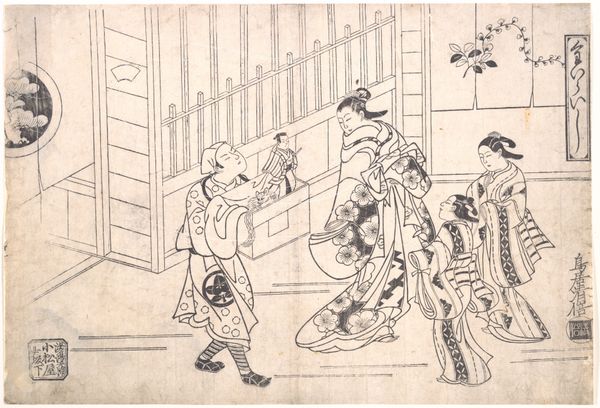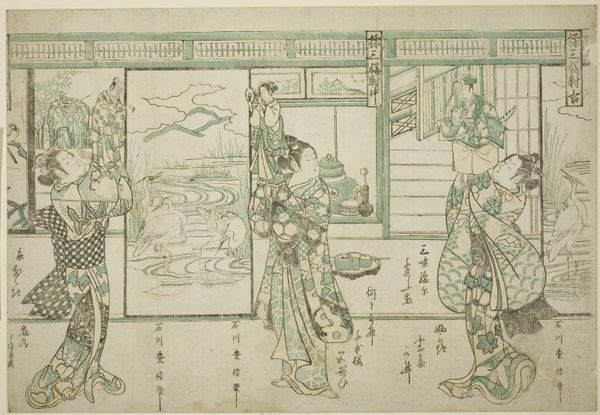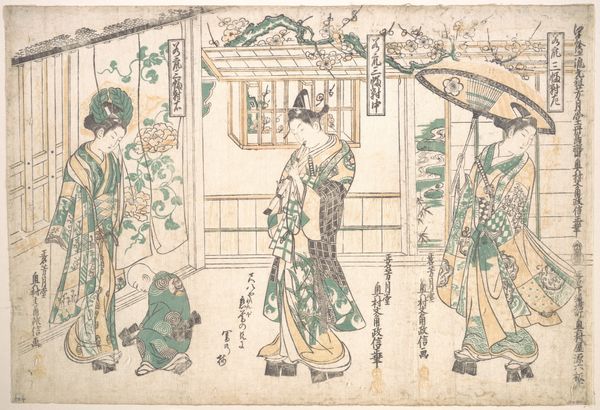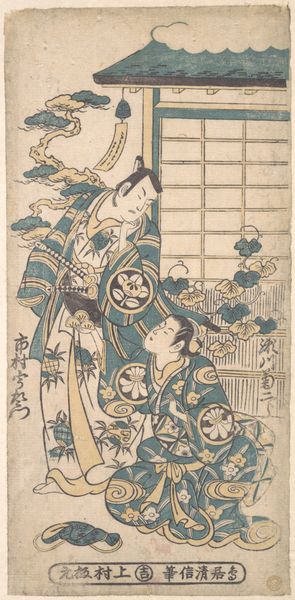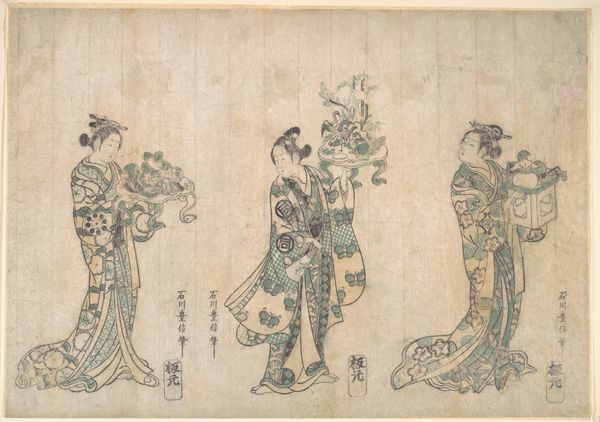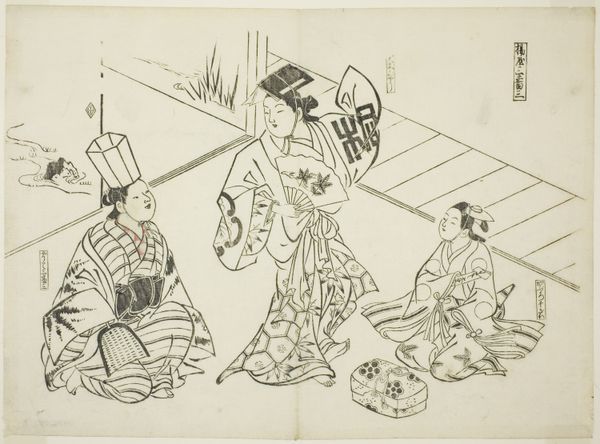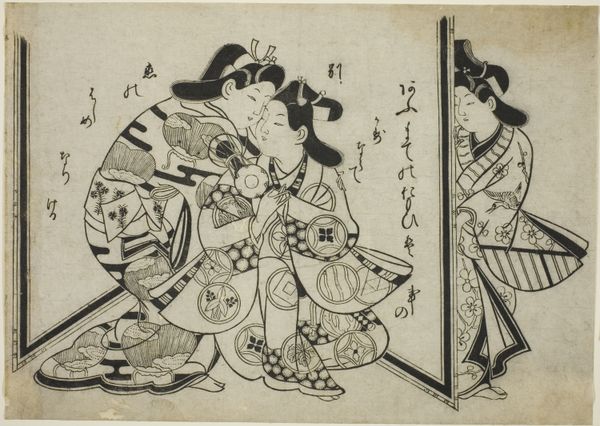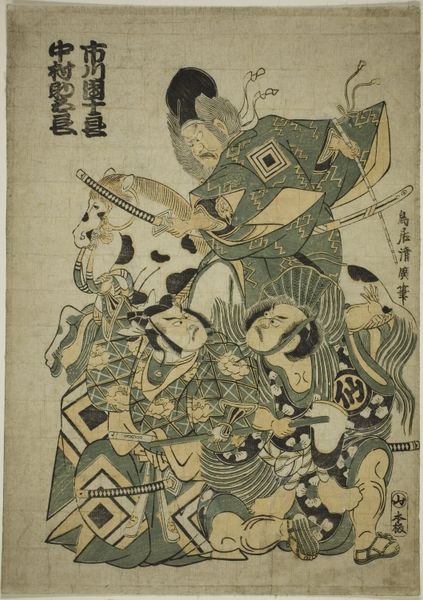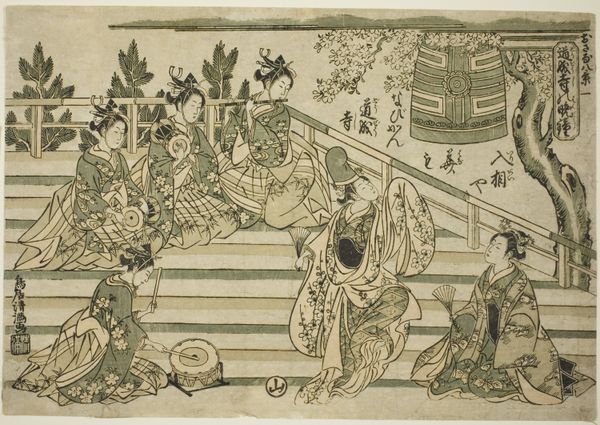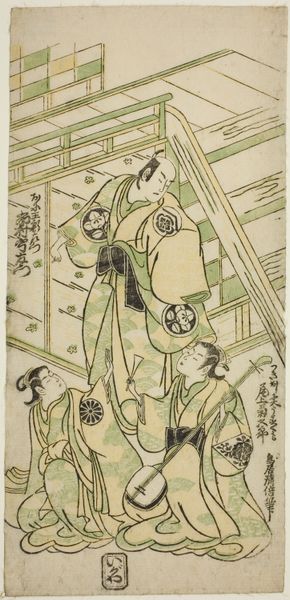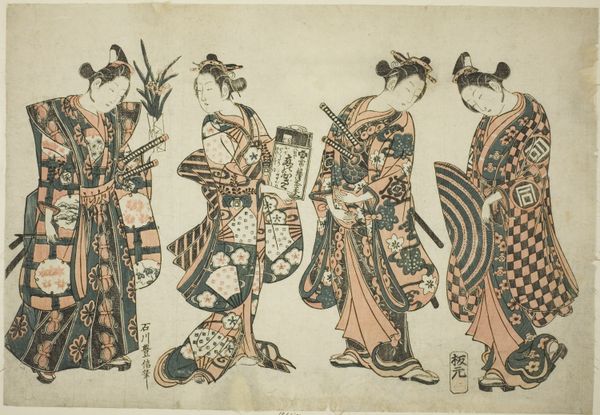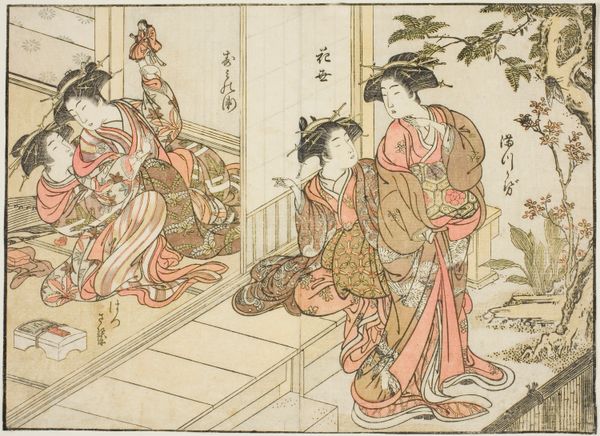
Child Attendants: A Set of Three (Kamuro sanpukutsui) c. 1744 - 1751
0:00
0:00
print, woodblock-print
# print
#
asian-art
#
ukiyo-e
#
figuration
#
woodblock-print
#
genre-painting
Dimensions: 29.9 × 43.9 cm (11 3/4 × 17 in.)
Copyright: Public Domain
Curator: Just looking at this, I feel like I've walked into a scene whispered across centuries – a glimpse into another time. The muted colors give it such a peaceful atmosphere, a soft blanket of the past laid out before us. Editor: Indeed. What we have here is a woodblock print titled "Child Attendants: A Set of Three (Kamuro sanpukutsui)," created by Okumura Masanobu sometime between 1744 and 1751. It's currently part of the collection at the Art Institute of Chicago, a striking example of ukiyo-e genre painting. Curator: Ukiyo-e... “pictures of the floating world," right? And this one really encapsulates that feeling. I love how Masanobu captures these little everyday moments. These aren't idealized beauties, just girls in what seems like the midst of daily life. There’s an intimacy here that draws you in. Editor: Precisely. It offers insight into the lives of young attendants, probably in service at some noble's house. Look at their elaborate hairstyles and garments, yet the tasks are so mundane – one seems to be writing or studying, another with sake barrels… We are seeing representations of class structures at work, of course presented within an idealized artistic framework acceptable for the time. Curator: That little one crouching near the sake barrel has me utterly charmed. So absorbed, almost secretive in her purpose. You wonder what stories they are whispering to each other while working, or not working, like the child asleep at the background on the top-right! Do you feel these prints had a specific kind of audience in mind at the time? Editor: Certainly, the burgeoning merchant class of Edo Japan. They were eager to consume images that offered them a window into other social spheres or confirmed their place within the socio-economic landscape. Ukiyo-e prints like these became emblems of aspiration and markers of taste. Note also the textual annotations in the prints: the artists needed to sign their works. Curator: It's so easy to get lost in the details – the patterns on their robes, the subtle expressions… almost like peering through a keyhole into another world. Knowing they were created to serve such a defined function just highlights how multifaceted the historical impact is of these artworks! Editor: A perfect summary, I think. An art work both aesthetic object and historical record. A window onto the ‘floating world’ of the past indeed.
Comments
No comments
Be the first to comment and join the conversation on the ultimate creative platform.
